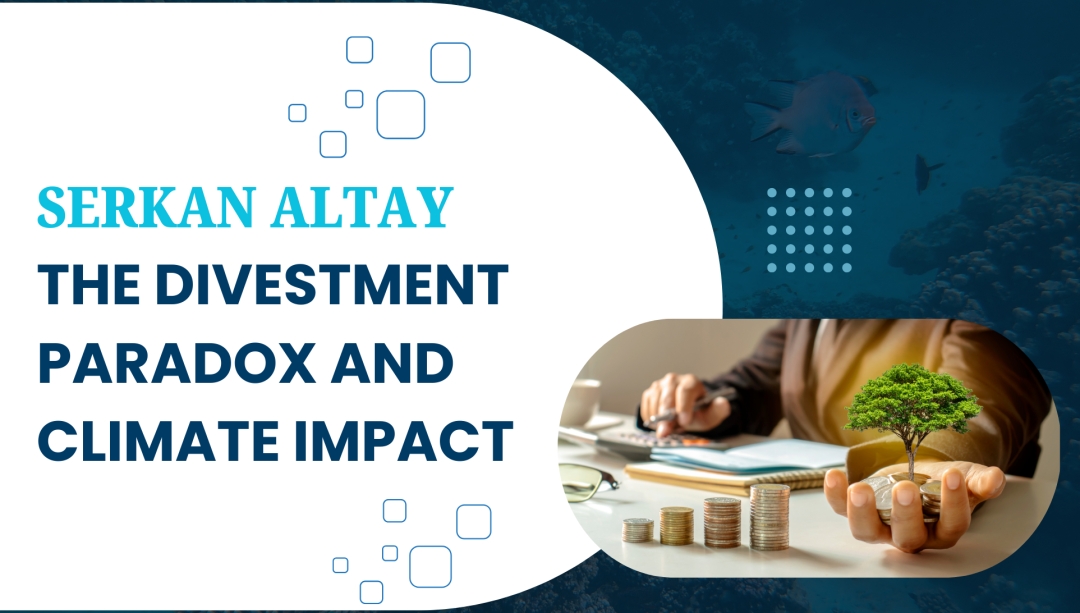
Serkan Altay argues that across university campuses and institutional boardrooms, environmental activists continue to rally support for divestment from fossil fuel companies and other carbon-intensive industries. The same can be said about discussions being held in boardrooms of community and private foundations that continue to face criticism about their investment holdings from donors and other community members and stakeholders. The rallying cry is compelling: withdraw financial assets from environmentally harmful businesses to force change. However, a closer examination reveals several fundamental limitations to divestment as an effective environmental strategy.
Ineffective Mechanism for Emissions Reduction
Divestment—the act of selling stocks in targeted companies—does not directly reduce greenhouse gas emissions. While symbolically powerful, these financial transactions occur in secondary markets, disconnected from the actual operations that produce emissions. As Serkan Altay emphasizes, real emissions reductions come through technological innovations, regulatory frameworks, and policy reforms that directly impact how companies operate. When investors rally around divestment, they may inadvertently divert attention and resources from these more effective approaches.
The path to meaningful environmental improvement requires transforming how energy is produced and consumed, not simply changing who owns shares in existing energy companies. For those concerned with climate impact, focusing on policy advocacy and supporting clean energy innovation may prove more effective than portfolio adjustments.
Market Liquidity Reality
A critical misunderstanding about divestment involves how secondary market transactions affect a company's operations. When an institution sells its shares in the open market, the company itself receives no less capital—its assets remain unchanged. Companies raise new capital through initial public offerings (IPOs), private placements, and direct bond issuances, not through the daily buying and selling of their shares on exchanges.
After divesting, the total number of outstanding shares remains identical, and the company continues to operate with precisely the same financial resources and environmental practices as before. The rallying for divestment often overlooks this fundamental market reality.
The "Replacement Investor" Problem
For every seller in the market, there must be a buyer. When environmentally conscious investors rally to sell their assets in fossil fuel companies, these shares don't disappear—they transfer to new owners. Often, these "replacement investors" are less concerned with environmental issues and may have less interest in pushing for sustainable practices.
This replacement effect creates an unintended consequence: divestment may concentrate ownership among investors who care less about climate change, potentially allowing companies to face less pressure regarding their environmental practices. The assets simply change hands without changing company behavior.
Diminished Shareholder Influence
Perhaps the most counterproductive aspect of divestment is the surrender of shareholder influence. When environmentally aware investors sell their assets, they remove themselves from the company's governance process. These divested investors can no longer vote on shareholder resolutions, engage with management, or rally support for sustainable practices.
Active engagement through shareholder activism—filing resolutions, voting on corporate policies, and direct communication with management—can achieve tangible improvements in corporate behavior. He emphasizes that finding like-minded investors is another approach; by pooling resources, shareholders with a relatively small stake in the company can team up with those having a larger stake. This would ultimately make it easier to approach management and ask them the difficult questions that could result in more meaningful and tangible change. The underlying message is that investors who maintain their positions retain the ability to advocate from within, potentially influencing corporate strategy, emissions targets, and sustainability reporting.
Many institutional investors have found that maintaining ownership while actively engaging with companies produces more measurable environmental improvements than divestment. By leveraging their assets as a means of influence rather than protest, these investors can rally support for specific environmental commitments and hold companies accountable for their climate impact.
The Positives
Despite its limitations as a direct driver of emissions reductions, divestment campaigns have successfully rallied public attention to climate issues. When major institutions announce plans to divest their assets from fossil fuels, these decisions generate significant media coverage and elevate climate discourse. This heightened awareness can indirectly influence policy decisions and corporate behavior. This could lead to GHG reductions in the long term.
Additionally, large-scale divestment movements can affect the social license of targeted industries. As more universities, pension funds, and religious organizations shift their assets away from certain sectors, it signals changing social norms that may ultimately impact consumer behavior, employee recruitment, and even financing costs for new projects. The collective moral statement made by divestment can contribute to a broader cultural shift regarding climate responsibility.
Conclusion: A Nuanced Approach to Climate Investing
The debate surrounding divestment is far from black and white. While the strategy offers symbolic power and can rally public attention to critical environmental challenges, its practical impact on corporate behavior remains limited. The complex reality of financial markets means that simply selling shares does not directly translate to emissions reductions or meaningful corporate change.
Investors and institutions committed to environmental progress must adopt a more sophisticated approach. This involves a multi-faceted strategy that combines strategic asset management with active engagement, policy advocacy, and support for technological innovation. Rather than viewing divestment as a singular solution, stakeholders should consider it one tool among many in the broader fight against climate change.
The most effective path forward lies in maintaining shareholder positions, exercising voting rights, pushing for transparent sustainability reporting, and supporting transformative technologies that can genuinely reduce greenhouse gas emissions. Altay maintains that staying at the table and actively challenging corporate practices allows environmentally conscious investors to potentially drive more substantial and lasting change than through divestment alone."
Ultimately, addressing climate challenges requires a holistic approach that goes beyond financial asset redistribution. It demands sustained commitment, strategic thinking, and a willingness to engage directly with the systemic changes needed to create a more sustainable global economy.
Media Contact
Company Name: Serkan Altay ENT
Contact Person: Serkan Altay
Email: Send Email
City: Toronto
Country: Canada
Website: about.me/serkanaltay





